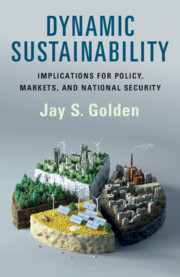Book contents
- Dynamic Sustainability
- Reviews
- Dynamic Sustainability
- Copyright page
- Dedication
- Contents
- About the Author
- Preface
- Acknowledgments
- Abbreviations
- Part I Introduction and Global Trends
- Part II Net-Zero-Carbon Transitions
- 4 Corporate Net-Zero-Carbon Transitions
- 5 The Electric Vehicle Transition
- 6 Electric Vehicle Charging Networks
- 7 Legacy Energy Transitions
- 8 Renewable Energy Transitions
- 9 Biobased and Agricultural Transitions
- Part III Dynamics of the Transition
- Part IV Finance and the Transition
- Part V Wrap Up and What Is Next
- Index
- References
9 - Biobased and Agricultural Transitions
from Part II - Net-Zero-Carbon Transitions
Published online by Cambridge University Press: 07 December 2023
- Dynamic Sustainability
- Reviews
- Dynamic Sustainability
- Copyright page
- Dedication
- Contents
- About the Author
- Preface
- Acknowledgments
- Abbreviations
- Part I Introduction and Global Trends
- Part II Net-Zero-Carbon Transitions
- 4 Corporate Net-Zero-Carbon Transitions
- 5 The Electric Vehicle Transition
- 6 Electric Vehicle Charging Networks
- 7 Legacy Energy Transitions
- 8 Renewable Energy Transitions
- 9 Biobased and Agricultural Transitions
- Part III Dynamics of the Transition
- Part IV Finance and the Transition
- Part V Wrap Up and What Is Next
- Index
- References
Summary
Agriculture accounts for a large percentage of greenhouse gas emissions but it also offers the promise of providing low-carbon feedstocks for energy, fuels, chemicals, and products. Agriculture also provides great opportunities for carbon sequestration. We discuss the investments and policies being activated to make this transition.
Keywords
- Type
- Chapter
- Information
- Dynamic SustainabilityImplications for Policy, Markets and National Security, pp. 122 - 138Publisher: Cambridge University PressPrint publication year: 2023



